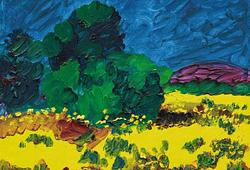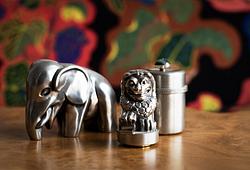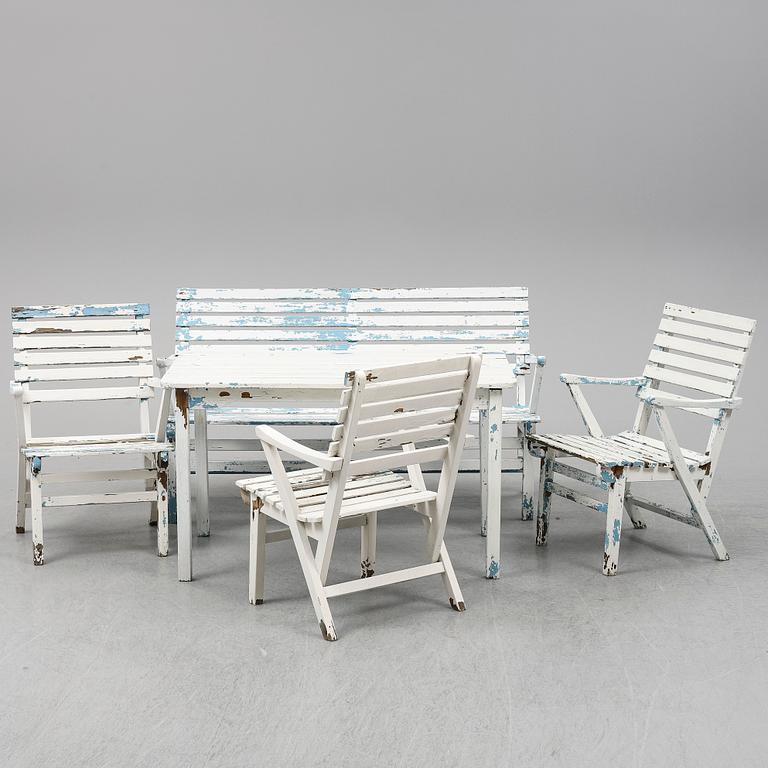Carl Malmsten
CARL MALMSTEN, a 5-piece set of "Bergshamra" garden furniture.
Seatheight 152, length of sofa 152, table 120 x 71, height 70 cm.
Later painting. Wear. Colour loss. Cracks due to dryness of the material. Table slightly unsteady.
More information
Bergshamra
Carl Malmstens klassiska trädgårdsmöbel Bergshamra tillverkas i tätvuxen furu, struken med linolja och järnvitriol. Möblerna döptes ofta efter beställare, orter, kulturpersonligheter eller stämningar och känslor. Carl Malmsten växte upp på Blasieholmen och tillbringade många idylliska barndomssomrar på sin morfars gård i Bergshamra, Solna. Där formades också den starka kärlek till naturen som följde honom genom livet. På hans möbelritningar finns ofta små noteringar, som exempelvis att ”denna konstruktion torde hålla över 100 år”.
Designer
Carl Malmsten is one of Sweden's most famous furniture designers. Many of his furniture are considered modern design classics, for example, the cane chair "Lilla Åland", the armchair "Farmor", the sofa "Samsas", the cabinet "Herrgården", and the furniture series "Vardag".
Both "Lilla Åland" and "Vardag" adopted the ideals of "beautiful everyday goods" of the 1940s. Their neat shape and frugal design quickly became timeless interior details that we still see in many homes today.
At the beginning of his career, Malmsten interned at various carpentry workshops and studied furniture at Nordiska museet and Skansen. He had his breakthrough in 1916 when he was commissioned to design part of the interior of Stockholm's City Hall.
During his career, Malmsten collaborated with several architects, such as Ragnar Östberg, Ivar Tengbom, and Ferdinand Boberg. He designed furniture for Stockholm's concert hall and Ulriksdal castle. He participated in the now iconic hosing exhibition at Liljevalchs gallery in 1917, where the term "Beautiful everyday goods" was coined.










































